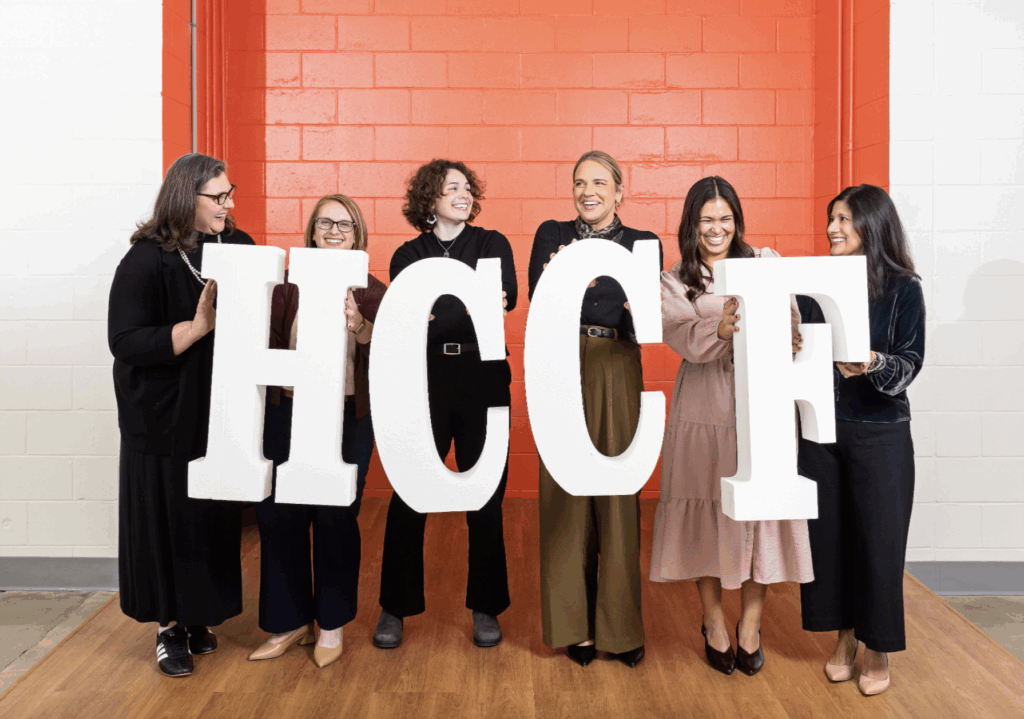Towne Post: "Hamilton County Community Foundation: Purpose In Partnership"
This article, published by Towne Post, highlights the important work Hamilton County Community Foundation (HCCF) does to make Hamilton County, Indiana, a more equitable and inclusive place for all residents.

Hamilton County Community Foundation Collaborates With Nonprofits & Leaders to Drive Lasting Local Change
The article below, published by Towne Post, highlights the important work Hamilton County Community Foundation (HCCF) does to make Hamilton County, Indiana, a more equitable and inclusive place for all residents. See original article written by Renee Larr for Towne Post here: https://townepost.com/indiana/fishers/hamilton-county-community-foundation-purpose-in-partnership/
When Danielle Stiles-Polk stepped into her role as president of the Hamilton County Community Foundation (HCCF), she knew the work ahead was both urgent and deeply rooted in community. For decades, the foundation, formerly known as Legacy Fund, has invested in Hamilton County by managing philanthropic dollars, supporting nonprofits, and addressing systemic challenges.
With a refreshed strategic plan and updated branding, HCCF is sharpening its focus on the most pressing issues facing residents today.
“Our role is to ensure that opportunity belongs to everyone who calls Hamilton County home,” Stiles-Polk says. “That means listening to the community, identifying the greatest needs, and partnering with organizations that can make the biggest impact.”
HCCF is not a direct service provider. Instead, it serves as a convener, collaborator and funder — connecting donors, nonprofits and civic leaders around shared priorities and objectives. Through donor-advised funds, community endowments, and grantmaking, the foundation reinvests millions of dollars annually in Hamilton County.
Data guides that reinvestment. In 2023, the foundation received support from Lilly Endowment to conduct a comprehensive community needs assessment. Working with Schunk Moreland Strategies, HCCF collected both quantitative and qualitative data through interviews, focus groups, and surveys. The findings, published in the 2024 Hamilton County Needs Assessment, now serve as the foundation for the organization’s new strategic plan.
The assessment revealed five primary areas of need: affordable housing, education and training, child care, social services, and transportation. While all five are priorities, HCCF’s immediate focus is on the first four, with transportation slated for future efforts due to its complexity.
Stiles-Polk says affordable housing rose to the top in every community conversation. In Hamilton County, an area often considered affluent, the challenge presents itself differently from that in neighboring counties. Here, the concern is ensuring that teachers, firefighters, police officers, and service providers can afford to live in the same areas where they work.
The new str ategic plan is both ambitious and realistic. It reflects a return to what Stiles-Polk calls the roots of a true community foundation — one that is grassroots, community-led, and adaptable.
ategic plan is both ambitious and realistic. It reflects a return to what Stiles-Polk calls the roots of a true community foundation — one that is grassroots, community-led, and adaptable.
HCCF’s planning grew from dozens of conversations with residents, nonprofits, and community leaders.
“We never sat at a table and said, ‘Here’s what we’re going to do for the county,’” Stiles-Polk says. “It was the county telling us what it needed. That’s what makes this plan so powerful.”
This vision is already taking shape through collaborative networks such as the housing and child care collaboratives, quarterly nonprofit “coffee connections,” and partnerships that span county lines. By working with the Central Indiana Community Foundation for back-office support, such as HR and IT, HCCF ensures its staff can remain 100% focused on Hamilton County.
HCCF is partnering with HAND (Hamilton County Area Neighborhood Development) and other organizations to establish a community land trust. This collaborative effort brings together municipalities, banks, and nonprofit partners to preserve affordable housing stock in perpetuity. The foundation is also supporting targeted solutions, such as housing for survivors of domestic violence, through partnerships with organizations like Prevail.
According to HAND, it would take an estimated 286 years to meet Hamilton County’s current affordable housing need at the present rate of construction and funding, based on a 2022 CDBG-funded assessment. The county currently has fewer than 200 housing vouchers, although the goal is not necessarily to add more vouchers, but to think creatively about solutions that fit the county best.
“People don’t always realize it, but there are individuals in Hamilton County who are one paycheck away from crisis,” Stiles-Polk says.
United Way’s ALICE (Asset Limited, Income Constrained, Employed) data shows that about 26–27% of county residents fall into this category. They are families earning too much to qualify for aid but not enough to meet basic needs.
As the county grows, so does the demand for a skilled workforce. HCCF’s education and training initiatives center on partnerships with Ivy Tech Community College and Invest Hamilton County, focusing on aligning training programs with the needs of local employers.
The foundation also works with education foundations across Hamilton County school districts, managing endowments and scholarships that provide direct support to students. By addressing workforce readiness, HCCF tackles multiple issues at once: stable employment reduces pressure on housing, child care, and social services.
Child care was a surprising but necessary area of focus that emerged from the needs assessment. In northern Hamilton County, many families rely on in-home or neighbor-based care because traditional child care centers are few and far between.
To address this, HCCF has partnered with Invest Hamilton County, Ivy Tech, Child Care Answers, and faith-based organizations to identify and expand quality child care options.
 According to the needs assessment, only 29% of children in the county have access to high-quality care.
According to the needs assessment, only 29% of children in the county have access to high-quality care.
Hamilton County’s prosperity often overshadows its hidden struggles. Yet the needs are significant: nearly 21,000 residents are food insecure, according to the needs assessment. More than 40 food pantries operate in the county, and Stiles-Polk says many report struggling to keep their shelves stocked.
HCCF partners with a wide range of nonprofit service providers, including Trinity Free Clinic, Shepherd’s Center of Hamilton County, and Prevail, to support residents who are uninsured, aging, or escaping violence. The foundation doesn’t just fund these organizations — it invests in strengthening their efforts.
Executive director training, fundraising support, and collaborative meetings are all integral to HCCF’s strategy for enhancing the nonprofit sector.
One recent win is the launch of the Dolly Parton Imagination Library across the county in July 2025. Through collaboration with libraries and county leaders, HCCF is funding this program to provide free books to children from birth to age 5.
“We were one of the last counties in Indiana to offer this resource, and now every child from ages 1 to 5 in Hamilton County has the opportunity to build a home library,” Stiles-Polk says.
While Hamilton County is known for its vibrant cities such as Carmel, Fishers, and Noblesville, the reality is more complex. The county’s ALICE population represents more than a quarter of residents, and many families struggle silently with food insecurity, inadequate child care, or the inability to find affordable housing.
“Just because the county is prosperous overall doesn’t mean there aren’t people here who are struggling,” Stiles-Polk says. “Our job is to make sure those needs aren’t overlooked simply because they’re not always visible.”
For residents who want to support the foundation’s mission, there are two primary ways to engage with us:
Donate
Contributions to the Community Investment Fund, HCCF’s unrestricted endowment, are reinvested in perpetuity to meet the county’s most pressing needs — today and in the future.
Engage
Businesses and civic leaders can participate in collaboratives and invite HCCF to the table for policy discussions.
For more information, visit hamiltoncountycf.org.
